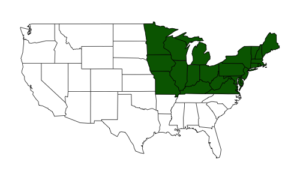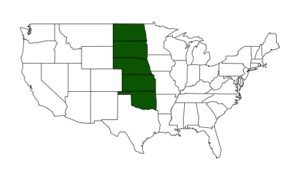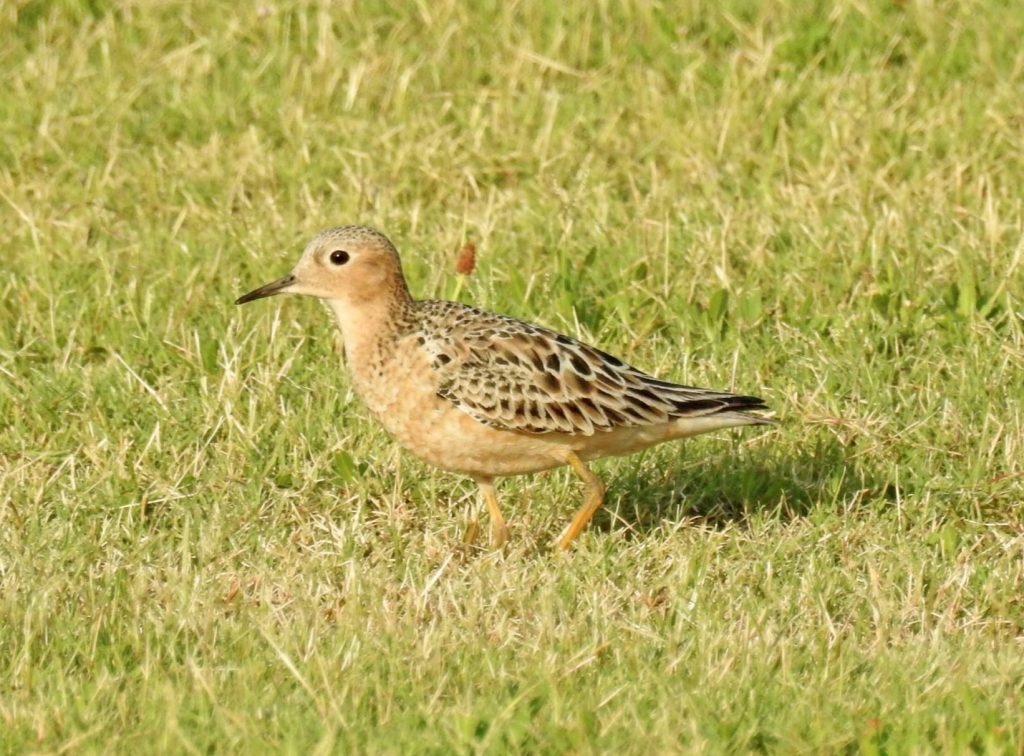BirdCast is soon to return with weekly migration forecasts and analyses.
Please check back in the coming week for the first official forecast and analysis posts of the Fall 2017 season! Of course, birds have been on the move for the last month, with careful observers noting the first migrants as early as the last week of June and the first week of July. But as a tease, let’s check in on what’s happening now as the first big pulses of the fall season begin to reach our collective radars (literally) . . .
Favorable migration conditions for light to moderate flights become more widespread across the West, while the East sees a mix of marginal and locally favorable migration conditions with local light and moderate movements punctuate an otherwise summery pattern.
Arrows show wind speed and direction (arrow points in the direction to which wind is blowing) 100 m above ground level. Areas with southerly winds are colored red; northerly winds colored blue. Accumulated precipitation (in 6 hour intervals) is green, outlined by white. Broadly speaking, areas of the map in blue will experience conditions that are favorable for migration, and areas where blue and green (and red and blue) intersect and overlap may experience migrant concentrations and fallouts as migrants interact with precipitation.
We use data collected by eBird users help make more accurate forecasts. If you enjoy the predictions contained in these posts, please consider submitting your own bird sightings to eBird to even further improve the content. Every observation counts, whether it be a single bird at a feeder in your backyard, or an entire day spent in a national park. To get started with eBird, head on over to the site!
Please note that photographs and other digital media showing birds come from the Macaulay Library, which receives credit along with the photographer/observer in the media caption as part of a new initiative that allows public contribution, access and use of natural history media.
Need a review of our definitions for regions, species on the move, and migration amounts? Please visit this link.
Quick Links to Regions
Upper Midwest and Northeast |
Gulf Coast and Southeast |
Great Plains |
West |
Upper Midwest and Northeast
The first half of the period will see locally light to moderate flights after the passage of a frontal boundary through the region. But mostly marginal migration conditions follow, keeping birds mostly on the ground during the second half of the period. See below for a list of species on the move in the region during the last week!
Top Movers
Increasing
| Species | Increase from Last Week | % of Checklists Reporting |
|---|---|---|
| Semipalmated Plover | 28% | 7.5 |
| Lesser Yellowlegs | 28% | 7 |
| Ruby-throated Hummingbird | 11% | 19.5 |
| Semipalmated Sandpiper | 17% | 8.5 |
| Greater Yellowlegs | 19% | 5.5 |
| Baltimore Oriole | 17% | 7.7 |
| Pectoral Sandpiper | 17% | 4 |
| Blue-gray Gnatcatcher | 9% | 8.6 |
| Least Sandpiper | 9% | 10.2 |
| Double-crested Cormorant | 5% | 17.9 |
| Franklin's Gull | 39% | 0.3 |
| Solitary Sandpiper | 9% | 4.9 |
| Spotted Sandpiper | 5% | 10.6 |
| Wood Duck | 4% | 12 |
Gulf Coast and Southeast
A warm and wet pattern typical of summer will keep movements isolated and light for the period. But increasing numbers of shorebirds will grace the region, as will the some early season migrant songbirds and waterbirds. See below for a list of what’s been happening in the region during the last week.
Top Movers
Increasing
| Species | Increase from Last Week | % of Checklists Reporting |
|---|---|---|
| Upland Sandpiper | 240% | 2.1 |
| White-faced Ibis | 135% | 3 |
| Yellow Warbler | 200% | 2 |
| Wood Stork | 42% | 6 |
| Belted Kingfisher | 24% | 7.2 |
| Little Blue Heron | 15% | 16.6 |
| Blue-gray Gnatcatcher | 14% | 15.9 |
| Great Egret | 10% | 28.2 |
| Ruby-throated Hummingbird | 11% | 18.5 |
| Solitary Sandpiper | 33% | 3.5 |
| Buff-breasted Sandpiper | 257% | 0.6 |
| Pectoral Sandpiper | 25% | 4.2 |
| Great Blue Heron | 7% | 24.4 |
| Northern Parula | 27% | 4.2 |
| Marsh Wren | 56% | 1.3 |
| Semipalmated Plover | 21% | 4.6 |
Great Plains
Mostly marginal and locally favorable migration conditions are the expectation for the period, particularly late in the weekend and tower the end of the coming work week. Movements will be primarily light to locally moderate. Birders should pay particular attention to areas where precipitation and marginal and favorable winds meet, as local shorebird concentrations and fallouts are likely (in addition to the odd vagrant high flying waterbirds that usually overfly the region without touching down).
Top Movers
Increasing
| Species | Increase from Last Week | % of Checklists Reporting |
|---|---|---|
| White-breasted Nuthatch | 57% | 12 |
| Ruby-throated Hummingbird | 38% | 13.2 |
| Chimney Swift | 38% | 13.7 |
| Marbled Godwit | 96% | 3.1 |
| Wilson's Phalarope | 40% | 6.6 |
| Franklin's Gull | 34% | 8.8 |
| Great Crested Flycatcher | 31% | 9.7 |
| Chipping Sparrow | 25% | 16.4 |
West
Favorable conditions spawn light to moderate flights in the Pacific Northwest and Northern Rockies to kick off the period. These conditions, and light to locally moderate movements tracking them, become increasingly widespread as the forecast period continues, despite local pockets of unfavorable winds and precipitation forecast to occur in some areas.
Top Movers
Increasing
| Species | Increase from Last Week | % of Checklists Reporting |
|---|---|---|
| Solitary Sandpiper | 124% | 1.8 |
| Lark Bunting | 114% | 1.4 |
| Black-bellied Plover | 47% | 3.4 |
| Lesser Yellowlegs | 49% | 2.8 |
| Baird's Sandpiper | 78% | 1.4 |
| Western Sandpiper | 23% | 7 |
| Red-breasted Nuthatch | 14% | 10.3 |
| Long-billed Curlew | 27% | 2.6 |
| Surf Scoter | 34% | 1.6 |
| Mew Gull | 84% | 0.5 |
| Least Sandpiper | 14% | 7.2 |
| Green-winged Teal | 34% | 1.3 |
| Greater Yellowlegs | 14% | 6.2 |
–––––––––––––––––––––––––––––––––––
Farnsworth and Van Doren








